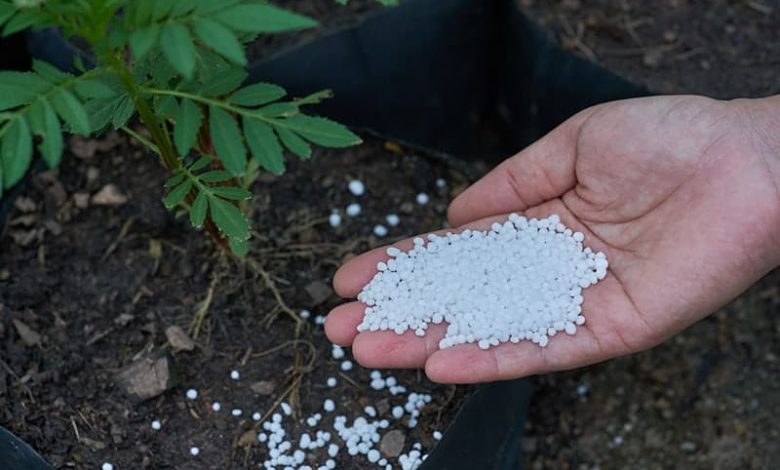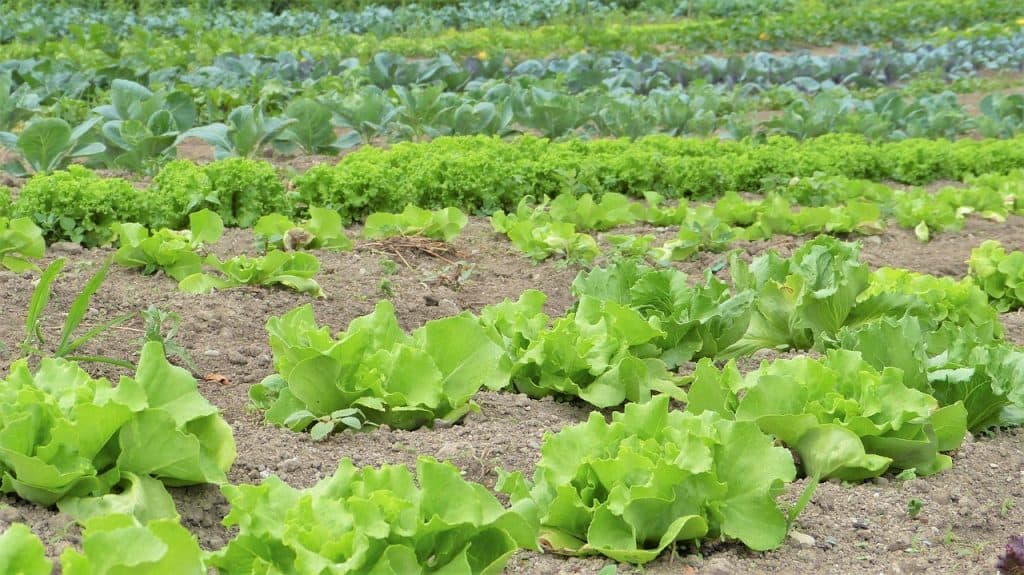Calcium Nitrate: What is it and How to Apply it in your Garden?

Calcium nitrate is an inorganic compound with the formula Ca(NO3)2.
This colorless salt absorbs moisture from the air and is usually found as a tetrahydrate.
It is mainly used as a component of fertilizers, but it has other applications. Nitrocalcite is the name of a mineral that is a hydrated calcium nitrate that forms as efflorescence when organic matter such as manure comes into contact with concrete or limestone in a dry environment, such as in stables or caves.
Several related salts are known, such as calcium ammonium nitrate decahydrate and calcium potassium nitrate decahydrate.
What is calcium nitrate?
 Calcium nitrate is an anhydrous and colorless salt.That is, it lacks water and coloration.
Calcium nitrate is an anhydrous and colorless salt.That is, it lacks water and coloration.
It is mainly manufactured for agriculture and wastewater treatment.
It’s avery effective compoundfor plant nutrition as it provides calcium and nitrogen to plants.
Its most common presentation is as a component of some fertilizers or in the form of small balls. It has high solubility and can also be found in solution versions.
Its formula is: Ca(NO3) 2.Some methods of manufacturing this compound are through the reaction of limestone or phosphate rock with nitric acid.
Same can be created from the reaction between ammonia nitrate and calcium hydroxide.
Its composition usually varies very little. It generally contains about15% nitrogen and 26% calcium.
What is it used for in agriculture?
In agriculture it is usedas fertilizerfor its important content of calcium and nitrogen.
nitrogen
 nitrogenit is an essential nutrient for plants since it is a component of chlorophyll (thus for photosynthesis) and of amino acids.
nitrogenit is an essential nutrient for plants since it is a component of chlorophyll (thus for photosynthesis) and of amino acids.
The lack of this nutrient can be identified in the size and color of the leaves. The little growth of the plant is noticeable, the leaves become small and begin to turn yellow. The stems weaken and the youngest leaves die and remain attached to the stem for some time.
The calcium
Secondly,calcium helps build cell wallsof the plants.
They strengthen the plant against breakage, as well as stress and pests.
The quality of the fruit usually improves markedly and flies to the plants more resistant to very high temperatures. It is necessary to constantly supply this nutrient either through compost or organic matter or fertilizers such as calcium nitrate.
calcium deficiencyit is perceived mainly in the young leaves, since they turn little by little from green to yellowish.
 Branches may reduce in thickness and leaves may become slightly or noticeably smaller depending on the stage. The lack of this nutrient is usually difficult to decipher as the first damage is caused in the root zone causing them to grow short and very thin.
Branches may reduce in thickness and leaves may become slightly or noticeably smaller depending on the stage. The lack of this nutrient is usually difficult to decipher as the first damage is caused in the root zone causing them to grow short and very thin.
Other factors that contribute to calcium deficiency are low or very abundant humidity in the environment.
On the other hand, excessive exposure to the sun causes the plant to grow rapidly but the sage retains less calcium. Although there are climatic conditions that cannot be controlled, remember that it is always important that you review the requirements of each plant to avoid nutrient problems.
Also, the mixture of calcium nitrate with potassium nitrate and sodium nitrate is normally used as a good fertilizer since itIt provides many nutrients to the plant.
When and how to apply it in your garden?
You can use calcium nitrate when you notice that the flowers of your plants show rot.
As mentioned before, you will provide them with calcium and nitrogen that will make them recover. For faster effects it is better to apply it as a solution; however, the non-liquid versions are also effective if you apply them to the soil in a way that makes them easy to absorb.
Ammonium nitrate is normally applied when nitrogen deficiencies occur or simply as a fertilizer. Despite providing enough nitrogen to the plant, ammonium nitrate blocks the absorption of calcium.
This can become a serious problem causing important deficiencies in the plants.
Calcium nitrate is an option that does not cause this damage and also provides nutrients to crops, especially those that tend to have calcium and nitrogen deficiencies.
Before applying any type of fertilizer it is advisable to first do a soil test.
excess calciumit can cause problems in the harvest since the plant stops absorbing other nutrients such as potassium, magnesium, manganese and iron. Sometimes it is possible that the stomata of the plants close causing superficial burns, confused with the lack of calcium.
If the fertilizer is applied when the fruit begins to develop, the calcium will stabilize the cells and the ends of the flower will be perceived as slightly damaged. However, the nitrogen will help the plant continue to grow and not stop and can bear fruit.
How is calcium nitrate prepared?
If the calcium nitrate comes in a granulated or dry presentation, it is enoughby mixing it with waterthanks to its high solubility. You can use a spray bottle to apply it to the ground.
It should be noted that fertilizers are mostly of chemical origin and need water to filter into the soil to the roots and begin to have an effect on the development of plants.
Take care that it is not in contact with the superficial part of the crop. If what you want is to use organic products, fertilizers, they are the best option.
It is recommended that you do not apply this fertilizer together with others that contain sulfur and phosphorus. Also do not allow it to mix with pesticides. This to avoid toxic reactions in the crop that prevent its consumption.
What crops benefit from it?
 It serves for plants with a tendency to lack calcium and nitrogen, as well as a source to allow other nutrients to be absorbed.
It serves for plants with a tendency to lack calcium and nitrogen, as well as a source to allow other nutrients to be absorbed.
The essential thing when providing a plant with fertilizer is to take care that the amounts of each nutrient are balanced.
Normally, in home stores there are already solutions prepared for application on the ground.
It is used in tomato, pepper and apple crops as it also helps them to better resist pests and diseases. If you notice that there is rot in your crop, you can apply calcium nitrate (on the soil, not on the leaves).
It also serves to treat cork stains and improve the flavor of apples.
Where can we buy Calcium Nitrate?
Generally in the nurseries of your locality or any store dedicated to the cultivation they will have calcium nitrate. In case you do not know any store, you can buy it on Amazon. Clicking here.



